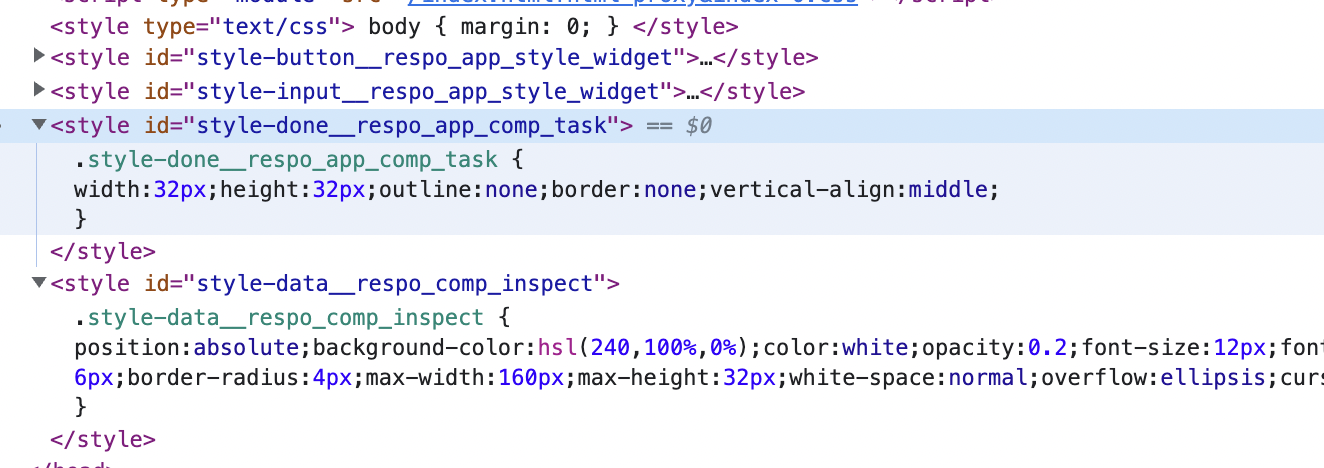Styles
Styles are represented in HashMap so it's very trival to extend with merge and if:
def style-a $ {}
:line-height 1.6
:color (hsl 0 0 80)
def style-b $ merge style-a
{}
:font-size "|16px"
if (> size 0)
{}
:font-weight "|bold"
The keys have to be keywords, the values can be either of keywords, numbers or strings.
Also I prepared a function called hsl as a helper.
In Respo, style updates are defined with direct accessing to el.style:
defn add-style (target op)
let
style-name (dashed->camel (name (key op))
style-value (val op)
aset (.-style target) style-name style-value
defn rm-style (target op)
let
style-name (dashed->camel (name op))
aset (.-style target) style-name nil
defn replace-style (target op)
let
style-name (dashed->camel (name (key op)))
style-value (val op)
aset (.-style target) style-name style-value
For convenience, I collected my frequent used styles in a package called respo-ui. You can find more in the source code.
Static Styles
A macro respo.css/defstyle has been added for add <style>...</style> referred with :class-name. It's less dynamic, which means you cannot pass parameters to styles in this way. It will insert into <head>...</head> a <style>...</style> element. It runs before main! and reload!.

define style:
defstyle style-input $ {}
"\"$0" $ {} (:font-size |16px)
:line-height |24px
:padding "|0px 8px"
:outline :none
:min-width |300px
:background-color $ hsl 0 0 94
:border :none
$0 will be replace by a string of className. So if you want to add rules for :hover, just write $0:hover.
input $ {} (:placeholder "\"Text")
:value $ :draft state
:class-name style-input
:style $ {}
:width $ &max 200
+ 24 $ text-width (:draft state) 16 |BlinkMacSystemFont
Internally, a definition of respo.app.comp.task/style-done generates className as style-done__respo_app_comp_task(with help of a new API &get-calcit-running-mode), so it's still unique across files and modules. During hot code swapping, the hashmap will be compared to previous hashmap to decide whether or not update.
Since it's not a GC-based solution, <style>..</style> created before hot code swapping remains in the DOM tree and will alway occupy memory. This solution is far from perfect, but it's supposed to cover current needs in Respo.
Node.js rendering
During HTML rendering in Node.js , styles are collected in a list in respo.css/*style-list-in-nodejs. It's an unstable design but you can get styles from it.